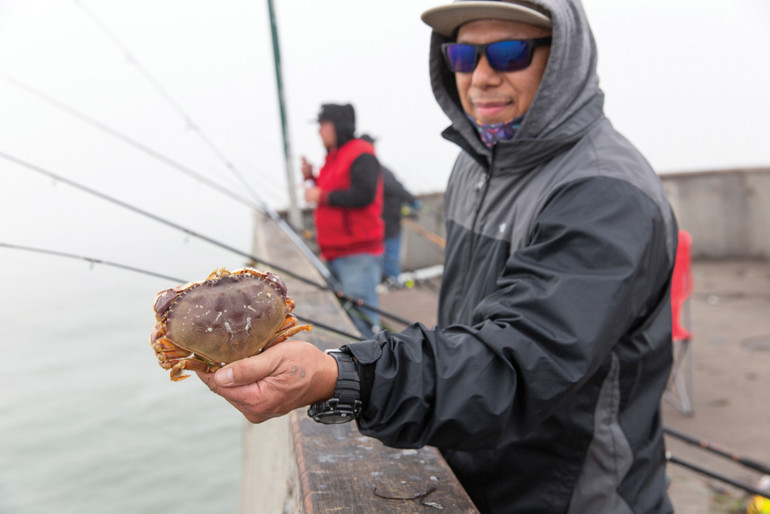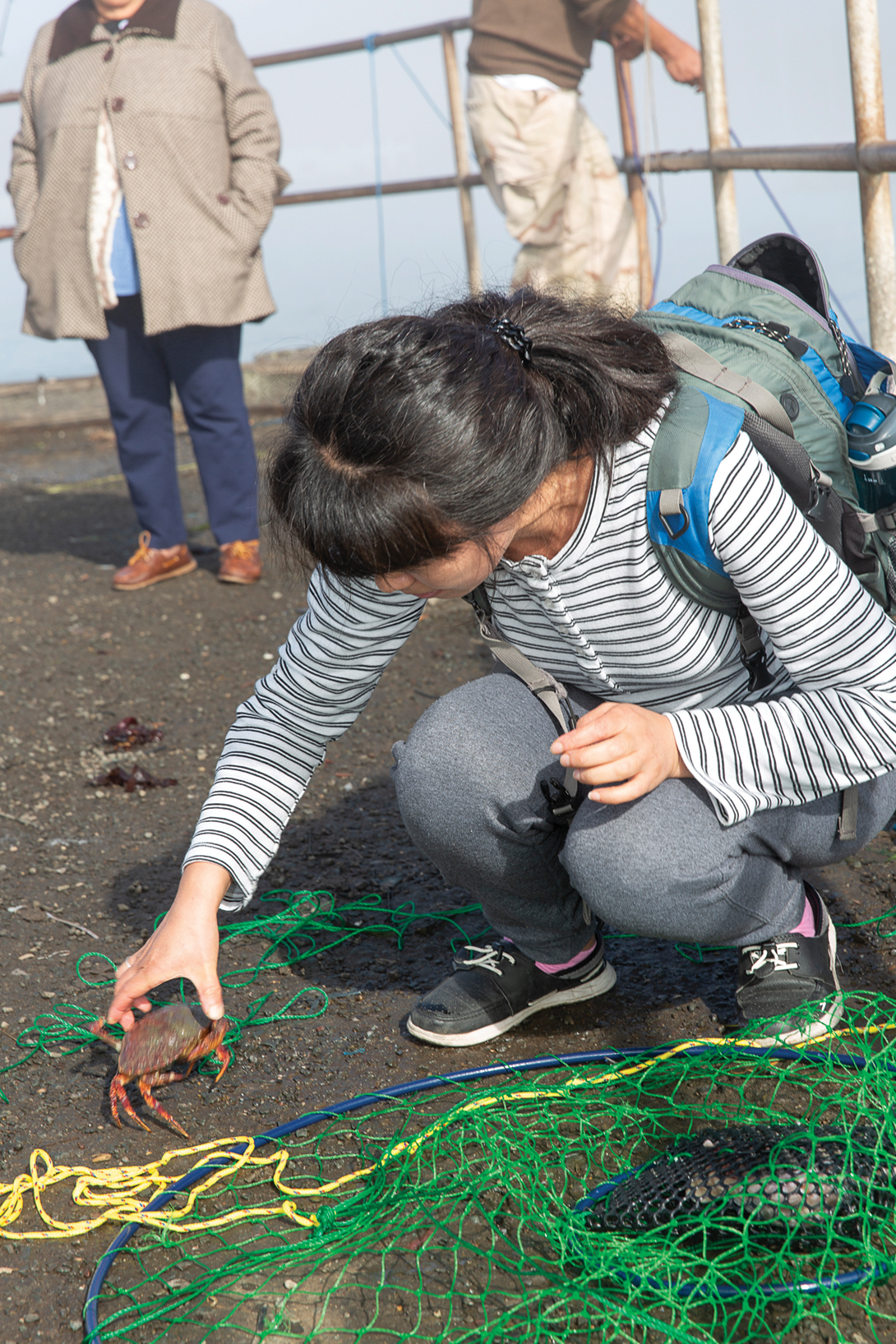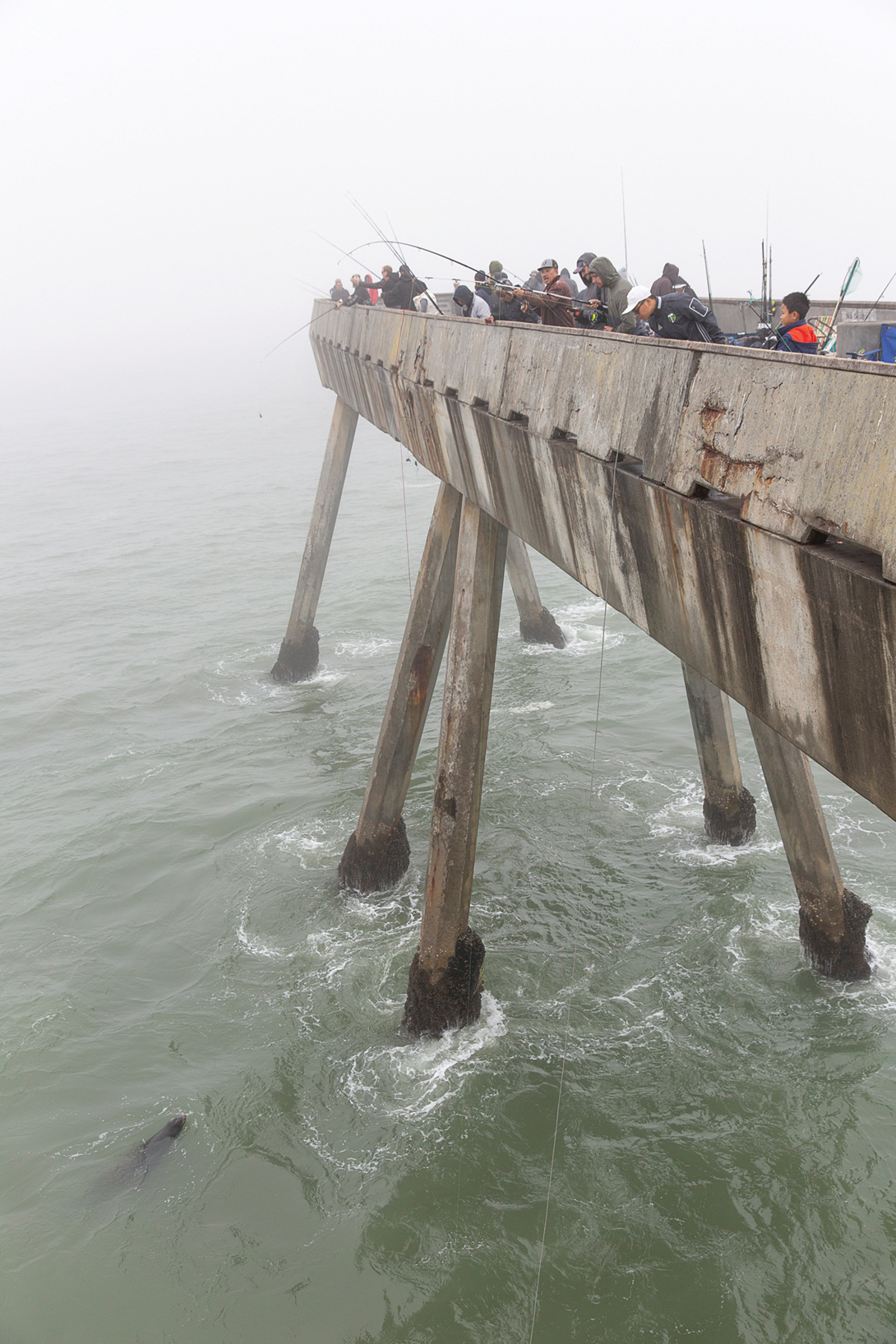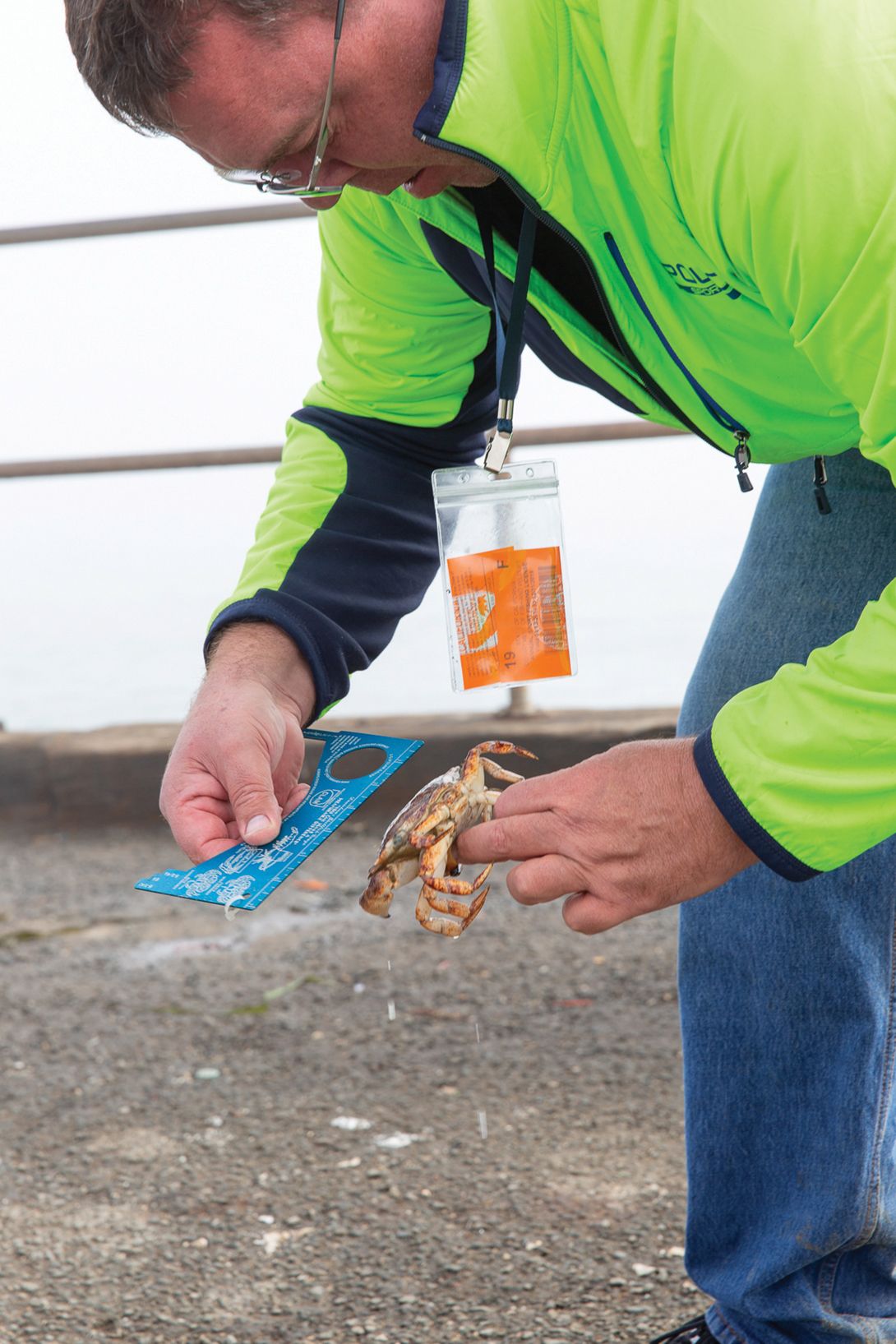THE IMAGE OF the crab — think Fisherman’s Wharf — is undeniably as much a part of San Francisco as Karl the Fog, steep hills and the Golden Gate Bridge. Cross over the bridge and you’ll find that crustaceans are revered, sought after, sometimes stolen and, of course, devoured.
If you’re a crab fisher, whether you’re on a boat or a kayak, on a pier or at the beach, you know a tasty dinner awaits. Basically, what you catch depends on if it’s the ocean or the bay — the bay has Pacific brown rock crab and red rock crab, and in the sea you will (hopefully) find Dungeness, with its notably succulent snowy sweet flesh, identifiably reddish-brown back and white-tipped pincered claws.
Who enjoys crabbing? Obviously, people who go crabbing tend to like the water and the outdoors and, frequently, other types of fishing. Marin native Matt Cromar, who has been crabbing here for 20 years, says, “People who crab like to get a closer connection to the food they eat and want to share their catch with family and friends.” Allan Blank, a Marin Headlands park ranger who offers crabbing demonstrations at Fort Baker, adds, “Many families as well as individuals come out to the piers to crab. Different cultures rely on crabs a lot in their food preparation; plus they do it because it’s a way of beating the high cost of living — where else could you go and catch your meal for free?” Kirk Lombard, owner of Sea Forager, a subscription-based sustainable seafood company, says, “A boat crabber either is a person who needs to justify the expense of owning a boat or is someone who really likes crab, and a shore crabber is the contemplative type who will be satisfied with a few crabs — shore crabbers rarely get more than five per day.”
Where do they crab?
Seasoned crabbers have their favorite spots, ranging from a boat outside the Golden Gate to off Sausalito’s rocky coast to the pier in the Presidio. Popular Dungeness destinations include the Pacifica Municipal Pier at high tide, Pillar Point at Half Moon Bay, Baker Beach, Ocean Beach and Fort Funston. “I used to snare crabs quite effectively on Stinson and surrounding areas,” Lombard says. “I’m not giving up exact locations. But name a sandy beach in Marin and you can pretty much guarantee there are ‘Dungies’ there, just past the inshore breakers, in season, and on relatively calm days.” Tom Mizukami of Mill Valley says fondly, “I love crabbing from my kayak at Muir Beach, which is well protected, and you can get out on the ocean when it’s too rough on many other beaches. Plus you can have a fire on the beach so it’s a great setting to warm up and cook a crab dinner.” (Note: taking any Dungeness crab from San Francisco or San Pablo bay is a felony punishable by stiff fines and possibly imprisonment.)
What does it take?
Besides patience, some skill, optimism and enough swimming ability to self-rescue if you’re on a kayak, having the right equipment can make or break an expedition. Newbies can head to a fishing supply store for a crab snare with bait box, a fishing rod or a crab net with a long rope to attach to a dock, and zip ties to attach a bait box to the net (watch out for crafty sea lions who may go for the bait). A crab measuring tool is a must-have — there are catch quantity and size limits — as is and a cooler to carry your crab home. For bait, raw chicken is the most popular choice. Cromar says, “I like to work through my gear a few times after about an hour to see if we are onto a good location, then adjust to a new spot if we aren’t on the crabs.”
Rules and regulations?
“Bad things can happen when you don’t know the rules,” Blank warns. Dungeness catching is restricted to specific seasons as determined by the California Department of Fish and Wildlife. The recreational crab season was expected to reopen on November 2, but that was changed to December 15 over concern for migrating whales. Always check a local information resource for domoic acid (a neurotoxin that can make humans ill) updates. A state fishing license is mandatory for fishing from a boat, shoreline or jetty if you’re over age 16, but is not required for fishing from a public pier. The quantity per-person limit is 10 male Dungeness a day (keeping female crabs is not allowed; look for differences in claw color and apron shape), and each crab must measure at least five-and-three-quarters inches across.
Downsides?
Despite frigid water, potential for disappointment, sharks possibly lurking beneath your kayak, and seagulls and seals trying to steal the bait, most crabbers wouldn’t trade the experience for the world. “There really is no worst part for me,” Mizukami says. “Some crabbers report problems with people pulling their pots and stealing their crab, but I bet if those people put a GoPro in their crab pots they would find other reasons their pots are empty. The crab pot can land at just the right angle that a tide current pushes a door open and once the bait is gone the crabs get out. Pots can also drift in the tide and go missing. Plus, if someone steals my crab I now believe they needed them more than I.” Cromar has a different take. “Losing crab pots to pot poachers or faulty gear is bad, but running out of beer is probably the worst thing that can happen.”
Kier Holmes is a native, Marin-based landscape designer who works at M2 Design and Construction, for over 15 years, has artfully designed and created sustainable gardens that are dynamic year round. She also writes for Gardenista, is an elementary school garden educator, a garden speaker for adults and leader of the Garden Club for kids at the Mill Valley Library. Holmes readily admits that she is a nerd about all things plant related, and can geek out on a dinner-plate dahlia like nobody’s business. Her natural habitat is among flowers and her hands are almost always dirty.






